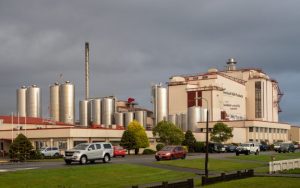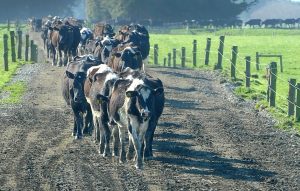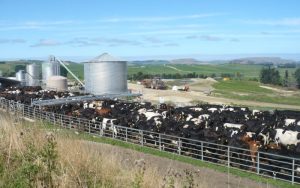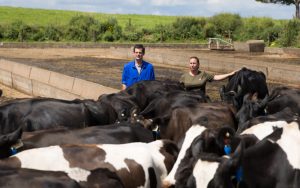
Fonterra’s latest forecast range is at $8.90 to $9.50 a kilogram of milksolids with a $9.20/kg midpoint, while Synlait is expecting $9.25/kg.
However, a run of 4% increases in GlobalDairyTrade (GDT) prices has bank analysts questioning if $9.25 to $9.50/kg predictions could go higher, and have even broached the subject of a $10/kg farm gate milk price.
Some Federated Farmers leaders believe milk contracts fixed months ago may prevent this.
Mid Canterbury dairy chairman Nick Geria said farmers were happy with the high payout, but were concerned about rising farm costs.
“Without sounding too much like a complainer, too much of the gloss is being taken up a bit by general agri-input inflation.
“From what I understand there is [a] 20 to 30% increase in farm input costs over the last 12 to 18 months, with the likes of urea going up 100%.”
He said rising feed prices and the increased cost of manufacturing and shipping nitrogen and other fertilisers were being passed on to farmers.
“Don’t get me wrong, it’s still a good year for dairy farmers, but there is some nervousness whether this is a short-term thing and whether farm costs are here to stay.”
He said consumer resistance at the high prices could start to appear as this happened with the natural laws of a commodity market.
The rise of the minimum wage to $21.20 an hour from April 1 is another fixed cost facing them.
Mr Geria said a double-digit payout was “in the realm of possibility”.
“But nobody knows really. I know dairy production globally is not increasing largely because of high input costs, particularly feed. We are lucky we are a relatively low input dairy-producing nation.”
South Canterbury dairy chairman Ads Hendriks said he was unsure if the payout would close out at $10/kg.
“It might do and it depends on how keen the overseas people are to buy it.
“I don’t think we will get there this year, but I can see $9.50/kg because a lot of production has been sold earlier in the season.
“The banks are saying there’s an opening next season of $8.50/kg.
“We could probably see that, but as always with a bit of caution — you don’t sell your eggs until the chicken has laid them.”
He said 6% inflation would remove about 50 cents/kg from dairy incomes.
Farmers hoped the payout wouldn’t be a one-off like the last record which went from $8.40/kg in 2013-14 to $4.40/kg the next year when northern hemisphere milk flowed on to the free market.
“At the moment we don’t anticipate it will be that dramatic because the Americans have an issue [with rising feed costs] and in Europe the environment is putting pressure where they produce.”
This includes the Netherlands government planning to put one-third of dairy farms into natural reserves to reduce nitrogen pollution.
Mr Hendriks said farmers were looking to control their farm costs as urea was becoming a “luxury item” at $1000 a tonne.
He said there was talk that dairy production was down in Canterbury by 6%, but some people were saying they were slightly up.
His cow production slowed during the long stint of rain with grass at brix levels of four instead of 10, until he lifted the herds’ energy consumption with grain.
Mr Hendriks said he had invested $450,000 into a road underpass for his herd because they were “cow people,” and farmers were unlikely to spend up and buy new tractors when they didn’t need to.
tim.cronshaw@alliedpress.co.nz
























